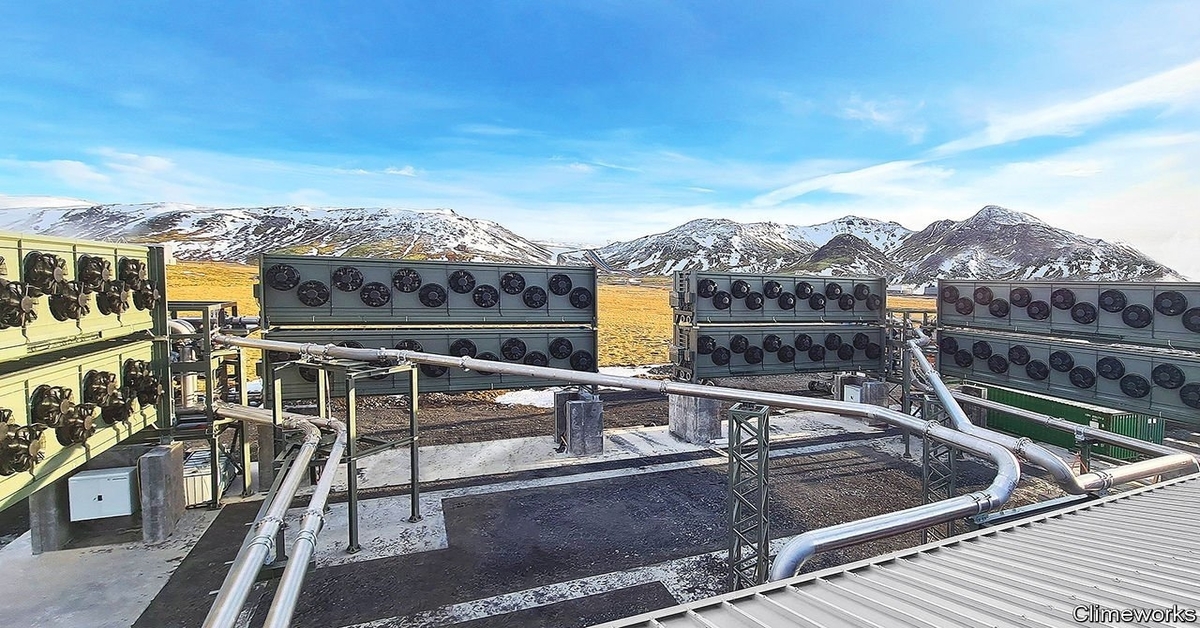The fundamental idea of carbon capture – capturing carbon dioxide and preventing it from being released into our environment – was first proposed in 1977.
Since then, the technology has been on the lips of many climate change proponents, expecting it to play a huge role in the global climate response.
Just recently, Orca, the world’s largest carbon capture plant just outside Reykjavik in Iceland, switched on its fans and sucked carbon dioxide out of thin air.
Sounds produced by the fans are subtle and soothing – somewhat like a gentle stream. The plant’s creators hope, like how the Wright brothers got aviation off the ground, Orca will kickstart major efforts to combat climate change through carbon capture technologies.
Walls and walls of gigantic suckers.
Juxtaposed against green, picturesque hills are eight rectangular steel boxes arranged in a U shape. Each box, the size of a shipping container, houses a network of fans, filters and pipes that draw in air and capture carbon dioxide in a two-step process powered entirely by renewable geothermal energy.
First, air is pulled into the collector using a fan. Inside the collector, a highly selective filter material, such as graphene, traps the carbon dioxide molecules but lets the other molecules out.
Next, the filter is regenerated once it reaches its maximum carbon dioxide capacity. This is done by pausing the collector, then heating the filter membrane to temperatures between 80 – 100 degrees Celsius. During this “facial spa treatment”, the pores of the filter expand and the trapped carbon dioxide molecules are expelled, leaving the operators with high-purity, high-concentration carbon dioxide.
What to do with all that carbon?
Climeworks (the company that designed Orca) partners with Carbfix (a company that turns carbon dioxide into stone) to – yup, you guessed it – turn carbon dioxide into stone.
Taking pure carbon dioxide from Orca, Carbfix mixes it with water and pumps the mixture deep underground. Through natural mineralisation, carbon dioxide reacts with Icelandic volcanic basalts to form calcium carbonate (the main ingredient in limestone). This way, carbon can literally be set in stone within two years, and subsequently locked away for thousands of years.
The carbon conundrum.
Sucking carbon and injecting it into the ground sounds like a simple yet elegant solution to our climate issue.
But what’s the catch? *Ka-ching!*
Out of 35 billion tonnes of carbon dioxide emitted by burning fossil fuels annually, Orca will capture a mere 4,000 tonnes – nowhere near a climate-relevant scale. Estimates show that 1.5 – 15 million tonnes of carbon have to be removed every year to meet the goals of the Paris Agreement. And each tonne of captured carbon costs around $600 – 900, a huge price to pay due to the associated energy requirements. Orca’s system consumes 2,650 kilowatt-hours to capture a tonne of carbon – a quarter of the energy consumed by the average US household in a year.
The goal is to make the process cheaper, less energy-intensive and easily scalable. With plans of building new plants in the next two to three years that will be 10 times larger than Orca, Climeworks claimed that a price of $200 – 300 per tonne is achievable by the end of the decade.
Costs can also be offset by selling captured carbon to companies like Coca Cola, where they inject recycled carbon dioxide into their carbonated drinks.
Hey, you might even be able to flaunt bling-bling made by captured carbon on your hands soon!




































